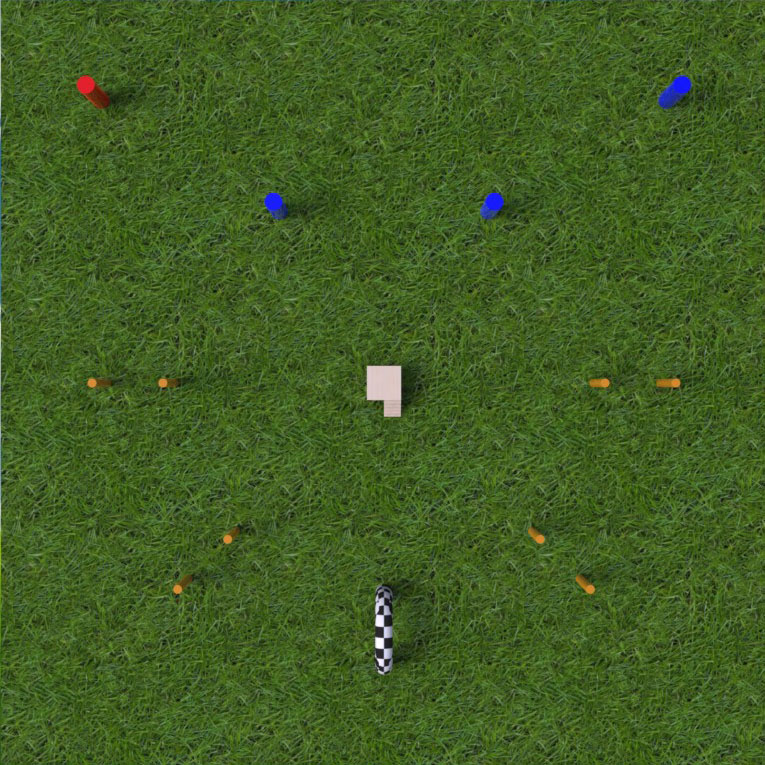 The challenge consists in an aerial race where the racing track is set up in 3 dimensions. The track is full of obstacles that the aircraft must navigate through in the best lap time. This competition is open to any fixed multi-rotor aircraft, including the ELEV-8 Quadcopter (#80000) alone, or with the ELEV-8 Hex Upgrade Kit (#80040).
The challenge consists in an aerial race where the racing track is set up in 3 dimensions. The track is full of obstacles that the aircraft must navigate through in the best lap time. This competition is open to any fixed multi-rotor aircraft, including the ELEV-8 Quadcopter (#80000) alone, or with the ELEV-8 Hex Upgrade Kit (#80040).
ELEV-8 Air Race is is a concept developed in conjunction with SmartCubo Torneo Nacional de Robotica. Visit www.SmartCubo.com for details.
Aircraft and Team Rules
- The aircraft must be controlled by a pilot. The robot can be programmed for a better stabilization and control, but not for fully autonomous flight.
- The aircraft may use sensors such as gyroscopes, accelerometers, ultrasonic distance detectors, and GPS.
- Each team must consist of at least two people: a pilot and a flight assistant or spotter.
- The pilot must control the aircraft from the Pilot Zone: 6 x 6 feet located in the middle of the field.
- The pilot is the only team member that is allowed to be inside the competition field.
- All the other team members and viewers must remain in The Safe Zone, 15 feet outside the border of the course.
Competition Rules
- All the races are individual; in a race against the clock.
- Only one aircraft may be in the competition field at a time.
- The competition is divided in two stages:
- Qualifiers: This stage consists in individual races where the teams with the best lap times will advance to the finals. Only 4, 8 or 16 teams will advance to the finals. This depends on the number of teams participating at the event.
- Finals: The best teams will be racing one against each other in different turns. This means that this round will be direct elimination. One team is racing against the other; the team with the best 2 lap total time will advance to the next round until we have the winner.
- Each round consists of two laps. The lap is started when the copter passes through the archway; this leaves the pilots with the option of taking off in the ring or passing by with high speed.
- The aircraft must navigate through the obstacles in this order:
- Begin at the starting arch.
- Go through the 2 gates.
- Enter to the Zigzag by the end of the field.
- Zigzag through 3 blue obstacles.
- Loop around the red obstacle.
- Pass through the 2 final gates.
- End by passing through the starting arch.
- If any obstacle is skipped, there is a lap-time penalty of 20 seconds, PLUS 10 seconds per skipped obstacle.
- A lap that skips all obstacles will not receive a lap time.
- If there is a collision with any of the field pylons or gates where damage is done to the craft, or if the craft touches the ground during flight, that round will be concluded and not counted for Qualification.
- In the event where damage is done to the craft, repairs can be made before the next round as long as the craft is proven to a judge to be flight capable.
About the Course
- Field: The competition area is 150 by 150 feet open space.
- Gates (shown yellow): approximately 24" in diameter and up to 15 feet tall. The distance between the gate poles is approximately 12 feet.
- Zigzag poles (shown blue): approximately 24" in diameter and up to 15 feet tall. The minimum space between poles is of 36 feet.
- Loop pole (shown red): approximately 24" in diameter and up to 15 feet tall.
- Archway: This start and end location is an archway up to 10 feet tall and 10 feet wide at the base.
- Pilot Zone: 6 x 6 feet in the center of the field.
- Obstacle judges: Positioned in the North, South, East and West points, to determine that the aircraft through the obstacles in the correct way.
- Time judge: Positioned at the Archway, this obstacle judge also times the start and finish of each run.
Measurements are approximate. Obstacle layout might be slightly different on Race Day.


